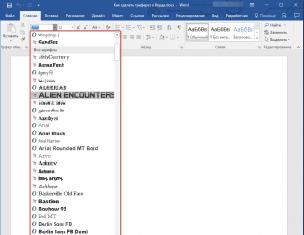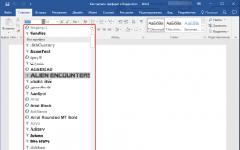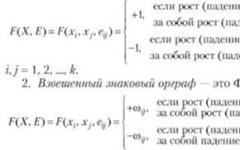Ранее я уже вкратце говорил что такое модуль, для чего он нужен и где его следует хранить. Давайте установим свой первый модуль. Пусть это будет модуль Devel https://www.drupal.org/project/devel
Качайте zip архив для 8 версии, распаковывайте и сохраняйте в sites/all/modules. Папок all и modules у вас нет-создавайте их.
В свежих версиях друпала кидайте модули сразу в папку modules.
Выглядеть у вас это должно вот так:
Никаких упоминаний о версии модуля в именах папки быть не должно.
После этого переходите в "Расширить" и в конце страницы увидите 4 модуля. Как я говорил ранее-модули могут быть зависимы друг от друга. Нам сейчас нужен только модуль "Devel generate". Этот модуль может генерировать материалы, термины таксономии, пользователей и меню. Использовать мы его будем при создании новостей на сайте.
Отмечаем этот модуль и сохраняем настройки.
 Модуль включится. Теперь переходите в "Конфигурация" и увидите там ряд новых страниц:
Модуль включится. Теперь переходите в "Конфигурация" и увидите там ряд новых страниц:
 Если у вас слабый хостинг, и при включении модуля посыпались ошибки и вы не видите этих пунктов меню-попробуйте очистить кэш сайта. Для этого на этой же странице перейдите в "Производительность" и нажмите там кнопку "Очистка кэша".
Если всё норм - значит модуль корректно установился. Остальные модули устанавливаются точно так же. Так же есть серверная технология Drush. Которая позволяет устанавливать модули прямо из консоли SSH.
Если вы ранее работали с Drush - то можете использовать вс те же команды, что и в предыдущих версиях.
Например скачать и установить Devel:
Если у вас слабый хостинг, и при включении модуля посыпались ошибки и вы не видите этих пунктов меню-попробуйте очистить кэш сайта. Для этого на этой же странице перейдите в "Производительность" и нажмите там кнопку "Очистка кэша".
Если всё норм - значит модуль корректно установился. Остальные модули устанавливаются точно так же. Так же есть серверная технология Drush. Которая позволяет устанавливать модули прямо из консоли SSH.
Если вы ранее работали с Drush - то можете использовать вс те же команды, что и в предыдущих версиях.
Например скачать и установить Devel:
By Jay Callicott
October 26, 2016
Editor"s Note: For the latest and greatest in Drupal 8, check out Jay"s most recent top Drupal 8 modules list.
Introduction
Welcome back to another Drupal t op modules blog post from Mediacurrent. Last year, I wrote the but never fear, we are back again with some great modules for Drupal 8. These are modules I strongly recommend because I use them on most new builds.
One thing worth mentioning is that this list is shorter than usual. One reason is that Drupal 8 is still fairly new (about a year old) and there aren’t as many stable modules in the wild as there are for Drupal 7. For a more extensive list, you can search most installed modules on Drupal.org.
The other reason for this being a shorter list is a good one - Drupal 8 provides a lot more functionality out of the box. With Drupal 8 you can launch production-ready sites with fewer contributed modules than ever. This is a win in my view.
For some context, I added some notes towards the end of the post that mention why some modules were left off this list. Some modules were ported to Drupal 8, some are in D8 limbo, others didn’t make the list for other reasons.
Finally, for this blog, I added Beginner/Intermediate/Advanced labels for each module listed to help you sort through which modules are the best fit for your own level of expertise.
Enjoy! Send your feedback and hate mail to my Twitter account @drupalninja or leave a comment below.
Jay "s Best Drupal 8 Modules List
- Admin Toolbar (Beginner) - The admin toolbar module effectively replaces the popular admin menu module in Drupal 8. You will still get your rollover menus but now the entire menu is responsive.
- Backup and Migrate (Beginner) - Backup and migrate is still a useful module to easily schedule database backups for your Drupal site.
- Components (Intermediate) - If you are doing any Twig theming this module is going to help you with your Twig file includes.
- Config Installer (Advanced) - The config installer module allows you to install a new site using existing configuration. Without this module Drupal would complain about UUIDs not matching. If you are an experienced developer writing custom install profiles this module will be very useful for you. Eventually this logic will be moved into core.
- Devel (Intermediate) - Devel has been around a long time and is still a great module for developer debugging.
- Field Group (Beginner) - This is a helpful module for cleaning up your content types. You can organize fields into tabs, accordions, etc. to give your content editors a better experience.
- Google Analytics (Beginner) - This simple module allows site admins the ability to easily configure Google Analytics in Drupal.
- Linkit (Beginner) - Still a great module for linking content with a nice interface for editors.
- Metatag (Beginner) - Maintained by Mediacurrent’s very own , this module is a must have for configuring your site’s meta tags.
- Panels / CTools / Page Manager (Intermediate) - Panels has been around for quite a while and has now been completely rebuilt for Drupal 8. If you are going to use one of these modules you are probably using all three. Panels gives you more control over page layouts than you are going to get with the core block layout page.
- Paragraphs / Entity Reference Revisions (Intermediate) - The paragraphs module is a Mediacurrent favorite for a couple of reasons. First, it will let you wave goodbye to field collections . Second, it will let you build a more robust content architecture. Paragraphs are like mini-content types that can handle a variety of use cases.
- Pathauto / Token (Beginner) - The pathauto module is a must-have module for configuring page path patterns.
- Redirect (Beginner) - Almost every new site needs to incorporate 301 redirects for old page URLs. The redirect module gives site admins an easy interface for creating those redirects in Drupal.
- Search API (Intermediate) - The Search API suite of modules is a fantastic way to configure your site searches. Now the Drupal 8 module includes the DB API which makes it even easier to get started.
- View unpublished (Beginner) - This is a small but handy module that fills a common permissions void in Drupal. Almost every site we do has a role without complete content editing privileges. That role still needs to be able to view unpublished content which you can’t really configure out of the box in Drupal 8.
- Simple Sitemap (Intermediate) - A pretty easy to configure module for creating XML sitemaps for search engines.
Modules removed from previous list
The following modules were either ported to Drupal 8 core or replaced by similar functionality in core:
Other notable mentions
Address field - Replaced by Address in Drupal 8. I haven’t found myself using this module lately.
Commerce - Still a must-have module for commerce sites. I haven’t done as many e-commerce sites lately.
Features / Strongarm - With Drupal 8 configuration management you don’t really need the Features module. There is still a Drupal 8 module but we have replaced it on our projects with D8 configuration and the config_installer profile.
File entity - Still available in Drupal 8. A must-have if you need to add fields to files like images.
Global Redirect - No Drupal 8 module. Some functionality has been ported to the Redirect module.
Reading Time: 4 minutes
M odules are essential components of Drupal that add extended functionality to the website and turn a simple website into a very powerful beast!
One of the best features of Drupal 8 is that it integrates several essential modules into the core of the CMS. This is a major improvement over Drupal 7! In this article, I will highlight several Drupal 8 ready modules for different use cases.
Admin Modules
A responsive admin menu with extra functionality always comes handy when managing a Drupal site. Here are some Drupal 8 modules for your Admin menu.
Admin Toolbar

This module replaces the original admin menu with a responsive version that greatly improves the original menu’s functionality by adding drop-down menus. This speeds up the access to all administration pages. You could extend the functionality further by adding extra links for flushing cache and running Cron jobs.
Field Group

The field group module allows easier organization of the content by grouping the fields together in either vertical or horizontal tabs, divs, accordions etc. This module greatly enhances the user experience for content editors.
Linkit

This is an extremely useful module that allows auto-complete feature for all internal and external links. Now, the content producers do not have to remember the exact URL. Adding the URL and the process of hyperlinking is now easy because of the very user-friendly UI of the module.
PathAuto

Relevant and easy to remember URLs are an essential practice for website’s SEO. This module automatically generates relevant and easy to remember URL according to your web page. These URLs ensure that the pages on the website rank better in search engines and that the pages perform well in SERP.
Drupal 8 Modules for Website Builders
BigPipe
Page load time is one of the most important parameters for both the users and search engines. If the page does not load quickly, the users will abandon the website and search engine might penalize your website! With the use of the right Drupal 8 modules, you will never have to compromise on performance metrics.
This module implements BigPipe caching, originally introduced by Facebook, in order to speed up the website. The module first renders the cached components of the page and then loads up the dynamic components. This way, the page load speed increases dramatically.

This module allows you to transfer and use your website’s configurations and components to other websites without any major issues.
Drupal 8 Blog Modules
Blog
The Blog module used to be a core Drupal 7 module, but has been removed from the core of Drupal 8 to a contributed Drupal 8 module. This module, as the name suggests, allows the website administrators to build and maintain a blog.

For a blogger, increasing the online reach is the top priority at all times. Social media remains the most important aspect of any strategy of increasing the reach of the blog. This module allows you to add social sharing buttons that let the visitors on the blog quickly share the content across their social media profiles.
Drupal 8 Newsletter Modules
MailSystem

The Newsletter Module for Drupal 7 has, unfortunately, not been ported over to Drupal 8. However, the MailSystem module can be used as a workaround. This module allows you to set the templates and themes for the outgoing mail. You could also send regular newsletters to your subscribers through the module.
Drupal 8 Picture Modules
The Drupal 8 core includes the responsive_image module into the core of the CMS.

После того, как и готов к работе, самое время познакомиться с админкой Drupal. Админка Drupal представляет из себя набор инструментов, с помощью которых вы получаете доступ к функционалу Drupal.
Админка Drupal: Панель управления
В верхней части сайта вы увидите панель управления, реализованную с помощью модуля – «Toolbar», в котором находится все необходимое для работы с сайтом. Панель управления состоит из двух разделов: панель меню (верхняя черная) и панель ярлыков (нижняя серая).
Панель меню
Давайте рассмотрим каждую кнопку панели меню более детально:

Все пункты меню можно редактировать. Вы можете удалять, добавлять и менять их местами. Чтобы это сделать, перейдите в Структура > Меню > Management .

На практике мы видим, что панель меню логически продуманна и не требует никаких особых изменений, советую вам оставить все как есть. А для того, чтобы получить быстрый доступ к определенным опциям на сайте, вы можете воспользоваться ярлыками, поговорим о них чуть ниже.
Мы рассмотрели практически все кнопки панели меню, без внимания остались только: учетная запись пользователя (1), которая показывает текущего активного пользователя, находящегося в данный момент на сайте. И «Выйти» (2), это кнопка, с помощью которой можно выйти с админки Drupal.
Если вы часто посещаете определенный раздел в админке Drupal, то чтобы получить к нему быстрый доступ, можете воспользоваться ярлыками. Ярлыки будут помещены ниже, под панелью меню.
Для того, чтобы создать свой ярлык, в открывшемся окне нажмите – «Добавить ярлык».

Пишем название ярлыка (1), и ниже указываем путь к странице, куда будет вести созданный ярлык (2). В примере я создам ярлык на страницу добавления новой статьи на сайт.

Мы видим, что у нас на панели управления появился новый ярлык – «Добавить статью».
Если вы вышли и не знаете как зайти в админку Drupal, то вы можете воспользоваться блоком – «Вход на сайт». Указываете свой логин и пароль администратора и нажимаете кнопку «Войти».

Если блок «Вход на сайт» отключен, то чтобы зайти в админку Drupal, введите в адресной строке браузера: http://имя_вашего_сайта/user. На открывшей странице появится форма входа, введите логин и пароль администратора и нажмите кнопку «Войти».

Для того, чтобы с админкой Drupal было удобнее работать, существуют два модуля – Administration menu и Module Filter, о них мы поговорим в следующих уроках.
Самые необходимые модули для проектов на Друпал.
Ниже привожу свой список так называемых "Must have" модулей, без которых вряд ли обходится хоть один из моих проектов.
Со временем пост будет обновляться, буду добавлять новые модули.
Содержимое:
Модули Drupal для администрирования:
- Administration menu - Удобное выпадающее меню вверху страницы. Быстрый доступ ко всем административным страницам, в любой момент. Минимум настроек.
- Module Filter - Переопределяет страницу модулей в более удобную. Добавляет динамический фильтр по названию модуля. Когда модулей становится много - без него никак.
- Localization update - Автоматический перевод модулей и ядра Drupal.
Модули Drupal для работы с контентом:
- Add another - Кнопка добавления еще одного материала. Сохраняет материал и загружает страницу создания нового материала того же типа. Удобно если добавляешь несколько нод подряд.
- Entityforms - Модуль для создания пользовательских форм. Пришел на замену устаревающему Webform .
- Entityform Anonymous - Позволяет заполнять формы созданные модулем Entityforms не авторизировавшимся пользователям.
- Field collection - Добавляет возможность создавать мультиполя для сущностей. Сами поля представлены в качестве отдельной сущности, в которую соответственно можно добавить любое количество полей всех типов, поддерживаемых сайтом. Возможно расширить дополнительными модулями: Field Collection Table - отображение коллекции полей таблицей, и Field collection views - для поддержки модулем Views.
- Field Group - Добавляет возможность группировать поля всевозможными способами: отдельными блоками, HTML5-элементами, jQuery-аккордионом или вкладками (горизонтальные/вертикальные).
- Views - Вывод любой информации из БД. Очень много настроек. Можно вывести все - пользователей, ноды, таксономию, любые сущности... Вывод таблиц, неформатированных данных, с помощью дополнительных модулей возможно расширение способов вывода. Например можно сделать страницу экспорта сущностей и их полей. Гипкая настройка отображений с возможностью дополнительной темизации. Очень мощный модуль! С 8-й версии Drupal будет включен в ядро.
- Chaos tool suite (Ctools) - Набор инструментов для работы с данными. Требуется для множества модулей.
- CKEditor - WYSIWYG (визуальный HTML) редактор с большим количеством настроек.
- Colorbox Node - Отображение контента в popup-окне без регионов темы. Удобно для, например, отображения WEB-форм или пользовательского соглашения во всплывающем окне.
- Database Optimization - Модуль добавляет возможность автоматической (по расписанию Cronetab) очистки кеша и оптимизацию базы данных (вручную).
- Panels - Очень гибкая настройка вывода информации. Интегрирована с Views. Имеет собственные настройки контекста для отображения данных. Встроенный шаблонизатор (настройка макетов отображения). Возможность создавать и настраивать собственные макеты. Позволяет выводить представления, блоки, любые сущности и собственную информацию. Настройка селекторов отображаемой информации.
- Display Suite - Позволяет переопределить шаблон вывода сущностей. Обладает множеством настроек для дополнительной темизации. Очень много полезных функций, например: имеет встроенный шаблонизатор (работает по аналогии с Panels , в том числе поддерживает макеты Panels ), позволяет настраивать отображение заголовка, дает возможность переопределить классы отдельно поля/лейбла и общий вид отображения поля, включать в шаблон ноды поле с представлением (Views) или блоком, и многое другое.
Модули Drupal для работы с мультимедиа:
- Colorbox - Удобный "litebox" плагин, для просмотра изображений (и, в принципе, любого контента) во всплывающем (popup) окне.
Модули Drupal для автоматизации:
- Rules - Пользовательский интерфейс, позволяющий создавать правила поведения сайта, при определенных событиях. Очень мощный модуль. Возможно самое разнообразное применение: от рассылки почты, до автоматического формирования цены в интернет-магазинах. Используя этот модуль можно добиться уникального функционала даже без знания языков программирования.
- Conditional Rules - Модуль расширяет функционал модуля Rules . Позволяет использовать условия в действиях правила. Упрощает написание правил, добавляет возможность проверки непосредственно в правиле.
- Token - Доступ к статическим данным, а также переменным сущностей, с помощью вставки специальных строк (Токенов ) в текст. Используется множеством модулей. Необходим для формирования логических ЧПУ и т.д.
- Pathauto - Настройка шаблонов автоматической генерации путей страниц (ЧПУ). Работает с модулем Token .









